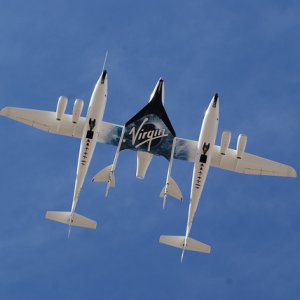Artificial Intelligence in Aeronautical Maintenance

STORY INLINE POST
Since the beginning of the digital transformation and the application of 4.0 technologies in aeronautical maintenance, many studies and practical work have been carried out to make maintenance, repair and overhaul (MRO) programs more efficient. This has led to the effective application of techniques, such as digital twins, machine learning, and augmented reality, among others, promoted by the companies dedicated to this sector to create plans and training programs for their employees as well as to invest in equipment and software to modernize their facilities, although this has been more a trend among medium to big repair companies in terms of maintenance lines. Small workshops are not the exception and are also in the process of implementing this technology, following the route of their larger counterparts where its implementation has been very successful.
From this analysis, it is clear that that artificial intelligence (AI) has taken a preponderant role, from discussions on how to manage the information generated by aircraft via big data, there has been talk of the challenge that represented and continues to represent the analysis of so many terabytes of information, here is the source of information that uses artificial intelligence to create mathematical models through logarithms that even ask to create predictive maintenance plans that in one way or another should help to improve not only the maintenance of aircraft, but even the design and manufacture of new aircraft, so much so that in the last edition of the famous Le Bourget 2023 Aeronautical Fair, the main manufacturers of aircrafts such as Airbus, Boeing and Bombardier, among others, presented their new models expressing that this was possible thanks to the application of the aforementioned technologies.
But let's return to the issue of maintenance, although Artificial Intelligence has come to order millions of terabytes of information to transform it into predictive plans, it is important to emphasize that the review of these is still in the hands of human criteria, since the implementation of aeronautical regulations, which although these are international, there will always be a local detail that differentiates them, That we cannot consider that the result of artificial intelligence is, at least for today, the absolute truth to consider in the creation of the future maintenance plans.
Now the MRO market is gigantic, just for commercial aviation, the last report submitted by “RESEARCH & MARKETS”, The Global Artificial Intelligence in Aviation Market is estimated to be USD 6.47 Bn in 2022 and is projected to reach USD 32.65 Bn by 2027, growing at a CAGR of 38.23%..
Market dynamics are forces that impact the prices and behaviors of the Global Artificial Intelligence in Aviation Market stakeholders. These forces create pricing signals which result from the changes in the supply and demand curves for a given product or service. Forces of Market Dynamics may be related to macro-economic and micro-economic factors. There are dynamic market forces other than price, demand, and supply. Human emotions can also drive decisions, influence the market, and create price signals.
As the market dynamics impact the supply and demand curves, decision-makers aim to determine the best way to use various financial tools to stem various strategies for speeding the growth and reducing the risks.
The Global Artificial Intelligence in Aviation Market is segmented based on Offerings, Technology, Applications, and Geography.
By Offerings, the market is classified into Software, Hardware, and Services.
By Technology, the market is classified into Machine Learning, Natural Language Processing, Context Awareness Computing, and Computer Vision.
By Applications, the market is classified into Smart Maintenance, Flight Operations, Training, Surveillance, Virtual Assistants, Dynamic Pricing, Manufacturing, and Others.
By Geography, the market is classified into Americas, Europe, Middle-East & Africa and Asia-Pacific.
On the other hand, after seeing these hard data, we must remember that the aviation market has a strong commitment to Operational Safety, affected on many occasions by human factor issues, although the use of Artificial Intelligence should contribute to the reduction, tending to the elimination, of these human factors there is still a field of deep analysis to determine the moment in which the application of artificial intelligence is highly reliable; according to IATA in a 10 Year Accident Dat the industry has improved its overall safety performance over the last ten years by 48%, with an accident rate in 2022 of 1.21 accidents per million sectors, compared to 2.31 in 2013. In 2013, there were 11 fatal accidents that resulted in 173 fatalities. Over the past five years, there have been an average of about seven fatal accidents per year for commercial aircraft (passengers and cargo) resulting in an annual average of 231 fatalities. IATA continues its focus on supporting aviation stakeholders to continuously reduce the industry fatality risk.
Another variable to consider is the experience of the pilots, who are the ones who know their aircraft perfectly, living day by day the experience of controlling, measuring, and acting on their performance through the information provided by the aircraft computers, the radars that are observing them, the weather conditions they face, etc. This experience is invaluable so that when analyzing the data that Artificial Intelligence processes, it is the pilots who play an important role in their analysis, with still that human touch and judgment that the experience of flight hours executed over time gives them.
However, there is a very long way to go and everything indicates that Artificial Intelligence can bear good fruit, we will have to continue with the process of analyzing the results it yields in order to determine the moment in which it can be used and that it is indeed the way that those of us who dedicate ourselves to this industry have more and better results.























